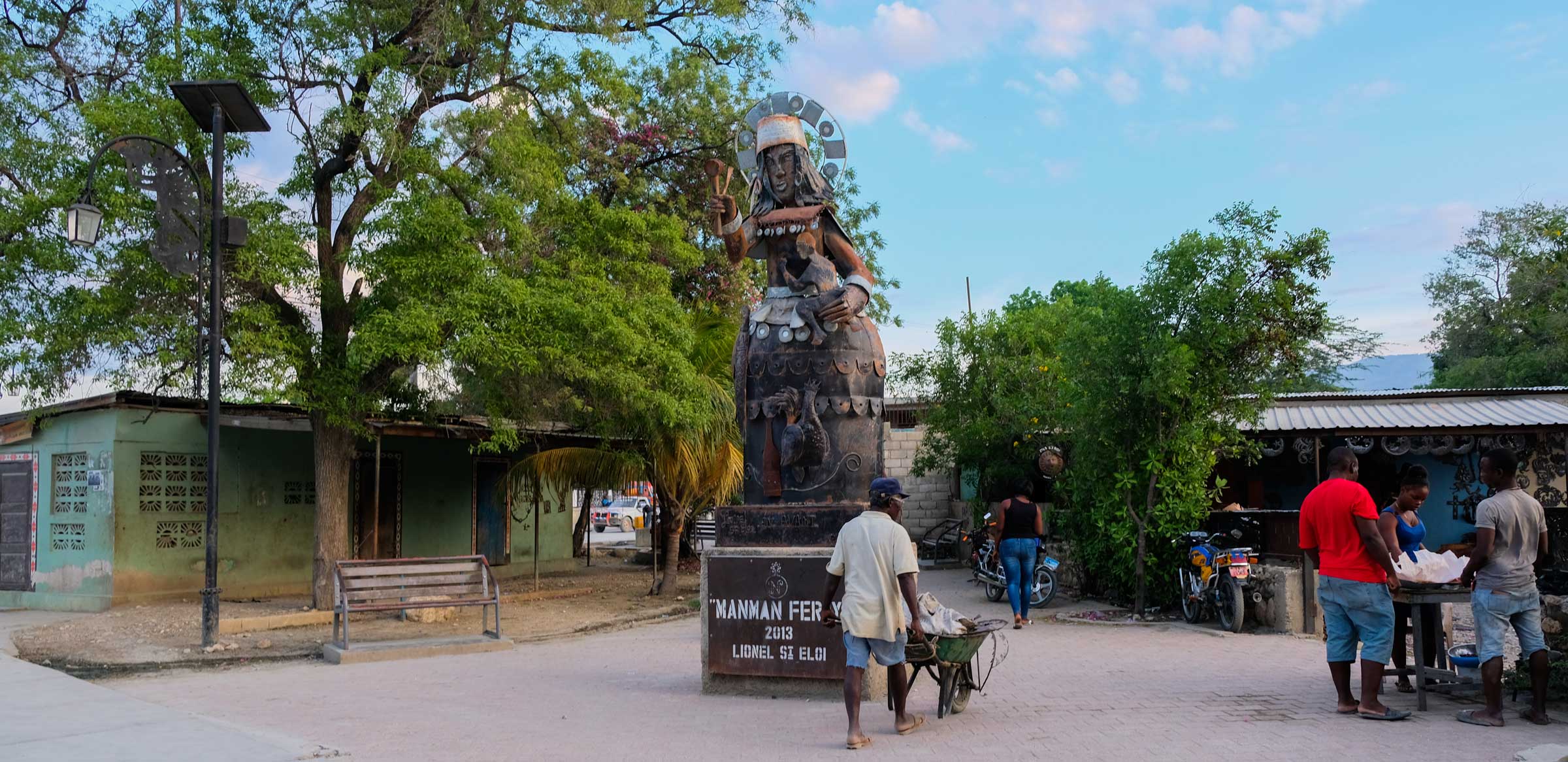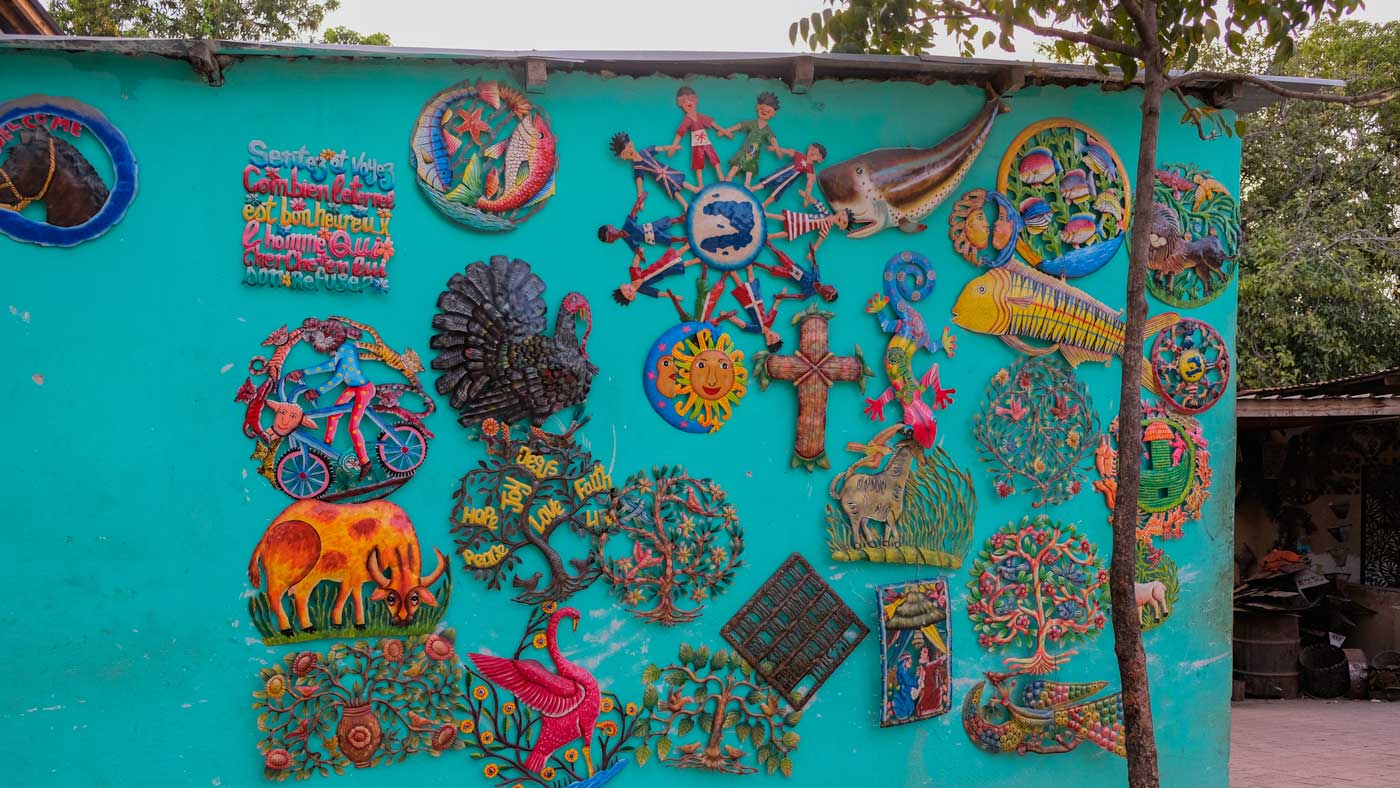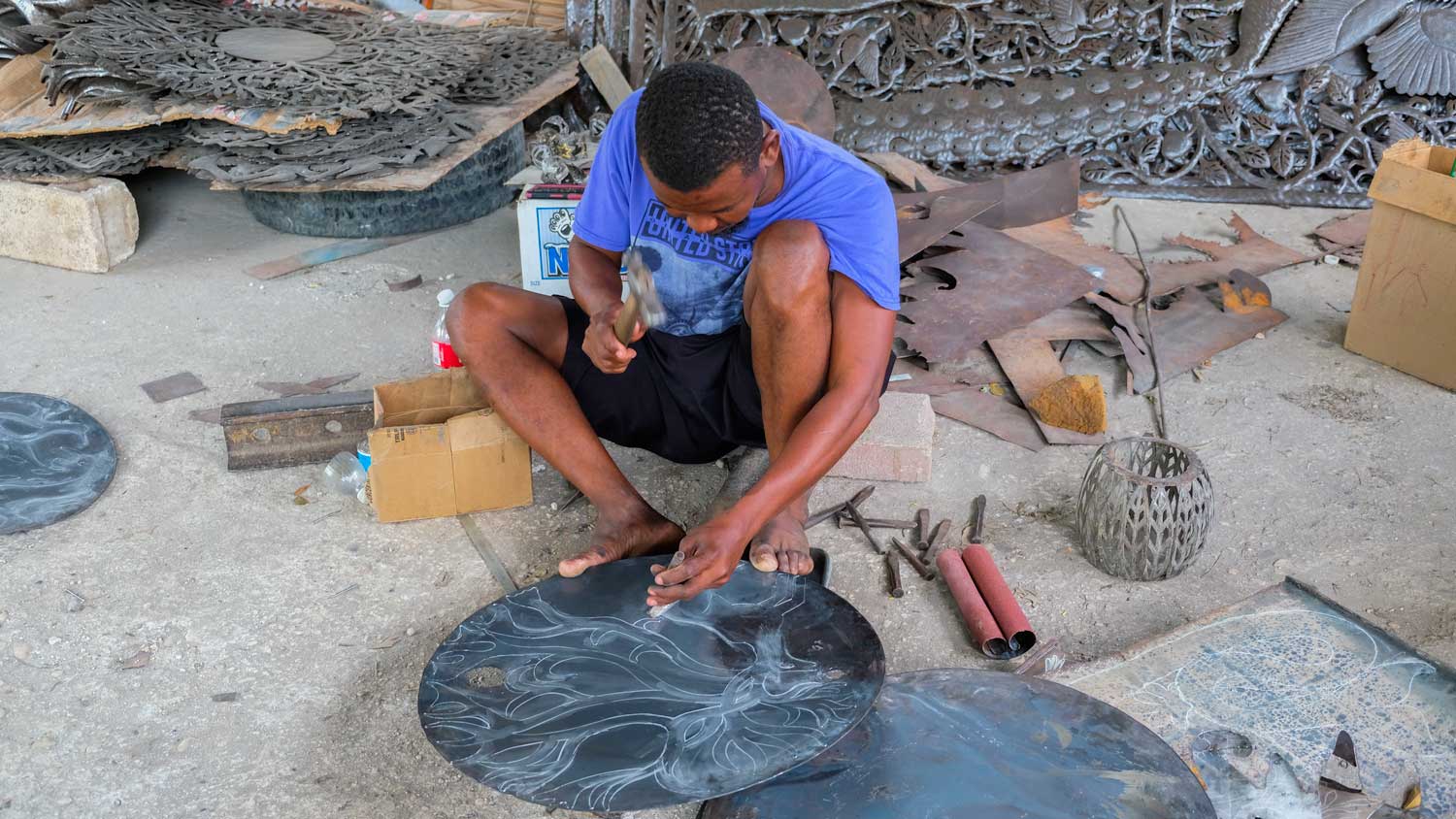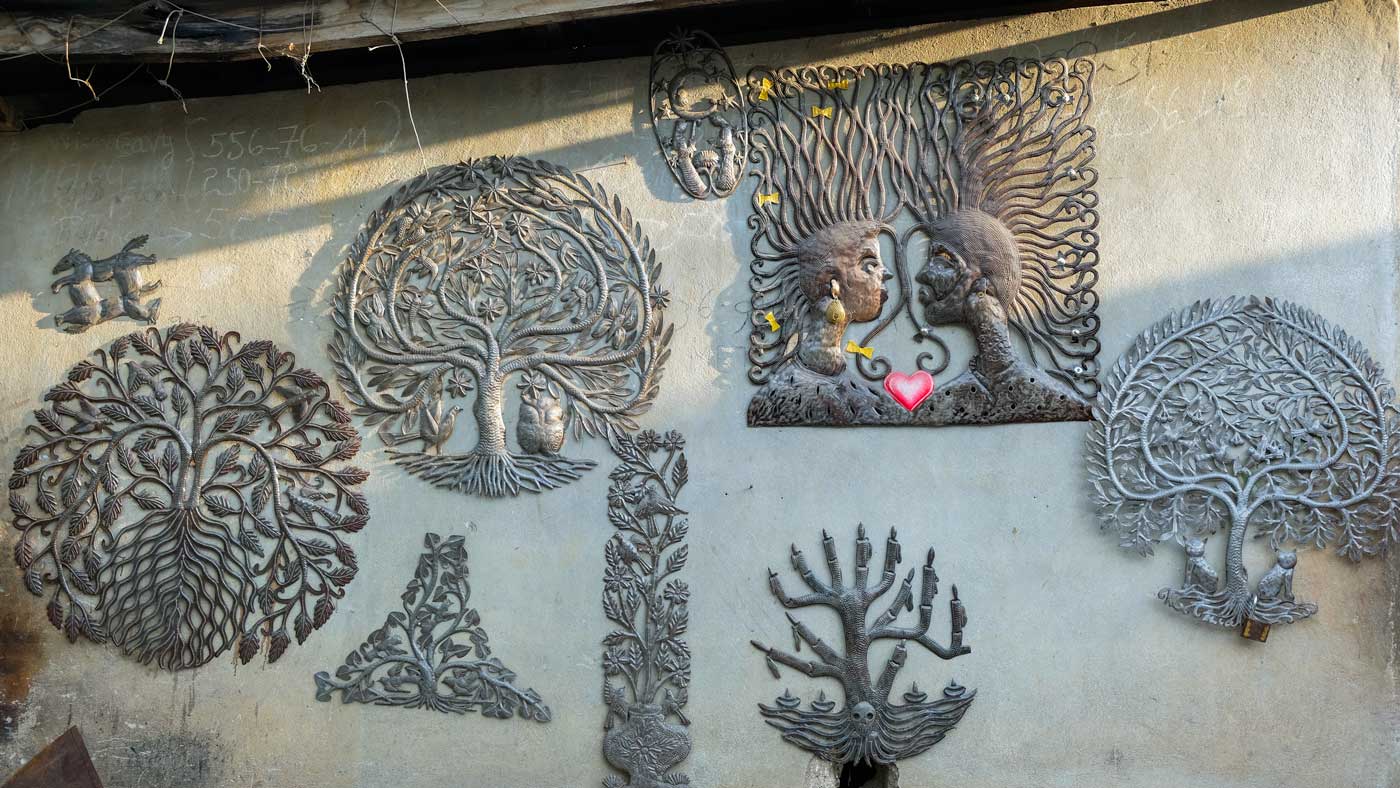
Photo: Franck Fontain
Meet the Metal-makers of the Artistic Village of Noailles
In the neighborhood of Croix-des-Bouquet, east of Port-au-Prince, the streets echo with the clang of hammer and tong and the precise tap-tap of chisels. Follow the sound as it meanders through the paved streets, and you’ll find yourself in the artistic village of Noailles – an open plaza connecting the clattering workshops and vibrant storefronts of the city’s thriving metalwork art scene.
Mornings in the village start with the sound of artists and blacksmiths opening up their shops. The work from the day or the night before is brought back into the light, and the serious business of bargain-hunting can begin. While shoppers compete to snap up the most interesting pieces before anyone else sees them, the artists themselves often work collaboratively – you’ll see them walking in and out of each other’s workshops to put the finishing touches on collaborative artworks.
Magic leaking through the seams
The entire village of Noailles is infused with the craft of metalwork, but in some parts of town it’s less obvious. Not every artist in the village has been able to splash out on a whitewashed adobe storefront, but the industry is everywhere: for every easy-on-the-eyes gift shop that fronts onto the open plaza, there are ten humbler workshops hidden behind fences of corrugated iron or gaily painted wood.
Here in the village of Noailles, art springs to life every single morning, in every single corner. It is the origin of most metalwork you’ll see around Port-au-Prince, building on a rich tradition of creativity that was born right here.
Village Noailles, Croix-des-Bouquets, Haiti
Photo: Franck Fontain
The making of a movement
Known as Kwadèbouke in Haitian creole, the city of Croix-des-Bouquet has an interesting history. Originally a coastal city, it was moved inland after the devastating 1770 earthquake. Thanks to that act of foresight, the descendants of the 1770 survivors luckily avoided the worst of the 2010 earthquake.
The practice of metalwork in Croix-des-Bouquets started back in the 1940s. Georges Liautaud pioneered the movement by opening a blacksmith shop where he undertook basic metalwork such as repairing tools and, on occasion, creating custom crosses for the tombs of the cemetery.
A few years later Liautaud crossed paths with DeWitt Peters, an American art lover, who was the first to encourage Liautaud to explore metalwork as a form of art and to promote it in Haiti. Soon, Liautaud had more commissions for his installations and sculptures than he had time to fulfil, and a guild industry was born.
At first, Liautaud worked mostly with recycled materials – specifically, metal drums. This opened a world of creativity and various techniques that were previously unexplored, and by the 1970s, an artistic vein of metalwork had spread across the country. Its heart, however, has stayed in the village of Noailles and Croix-des-Bouquets remains the crux of metalwork in Haiti, attracting artists from around the country who want to work in this atmosphere and show off their skills to travelling art lovers.
What you’ll find here
Here you’ll find original sculptures hammered out or precision-welded from repurposed pieces of metal that began their lives as car-parts, cutlery, or wrought-iron finials. Reborn, you’ll find them as candle-holders, plates, mirror frames, large focal wall-pieces and less luggage-friendly items like practical furniture. It’s astonishing to see such a breadth of ideas and such a high level of skill produced in what seems to many strangers a rather humble birthplace.
Tucked away amongst the tumbledown streets of Croix-des-Bouquet, the artistic village of Noailles is proud to be the birthplace of metalwork as we now know it in Haiti. By buying an artwork from Noailles, you can support the local craftsmen who hone their creative trades here, and keep a memory of Haiti that will last forever and start plenty of good
Top tips
It’s best to bring gourdes with some small change, though many merchants accept American dollars. It’s also wise to plan ahead by bringing a way to take your new purchases home with you – although you’ll find plenty of pocket-size trinkets, some of the works in the village are quite impressive in size!
Remember that these artists are also businesspersons. Be prepared to haggle here just like you would for fresh produce from the farmers’ markets or the artworks sold on Champ de Mars.
Written by Kelly Paulemon.
Published April 2019
Find Village de Noailles
Explore Haiti’s art and culture

Paradise for your inbox
Your monthly ticket to Haiti awaits! Get first-hand travel tips, the latest news, and inspiring stories delivered straight to your inbox—no spam, just paradise.







